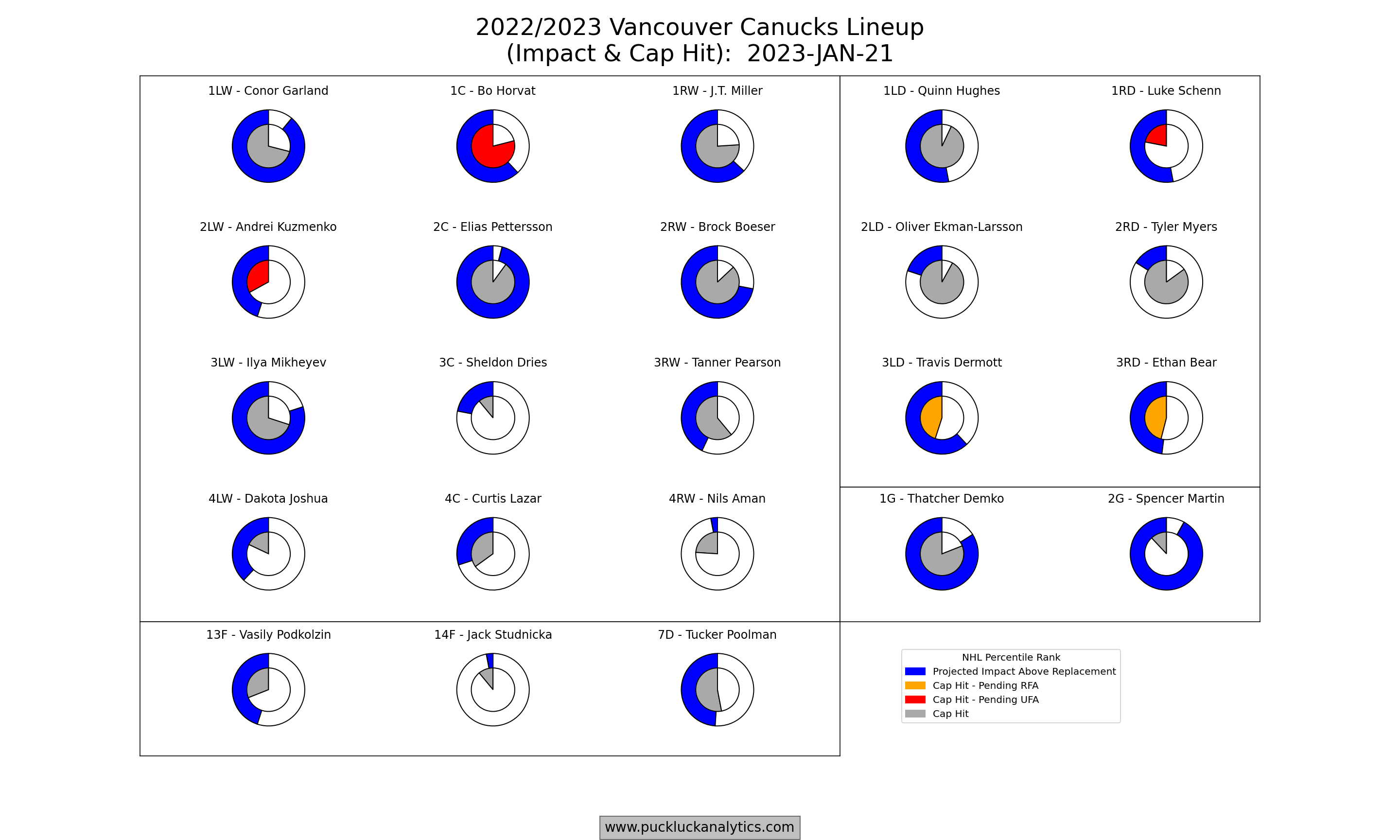I recently posted some thoughts on roster building that I think is a more sustainable approach to long term success compared to the typical patterns currently displayed across the NHL. I termed the approach Roster Regeneration and today we’ll try to put it into practice. (I highly recommend giving it a read for important context before continuing. You can find it here.)
Since the Vancouver Canucks inspired me to put my roster building thoughts down, we’re going to use the Canucks to put it into practice. Our goal is to put together a plan to set the Canucks up for the Roster Regeneration approach.
Current Season Performance
First, need to understand the Canucks’ position in the current 22/23 season. I recently put together a Team Synopsis post looking at their current season performance, so we can pull what we need from there.
We’re focused on building a sustainable long term plan now, so much of what we looked at in the team synopsis is of little importance. What is important is it’s clear the Canucks have fallen off the pace this season and are a long shot to make the playoffs. While they may have underperformed to some extent, their current roster strength is near average and they need to improve to become a contender.
Current Roster
Let’s dig deeper into the Canucks roster, with our Roster Regeneration approach to team building in mind. Before we can put together a plan on how set the team up for long term success, we need to understand what we have. To be successful with our Roster Regeneration approach, we need the following:
- Key Players: 2-3 players that can lead the team for a decade or longer
- Contention Core: 6-8 players in their prime that complement the Key Players to fill out the top half of the roster with the intention of competing now.
- Future Core: A collection of prospect and picks that will reach their prime 5-7 years after the current contention core.
So, what do we have?
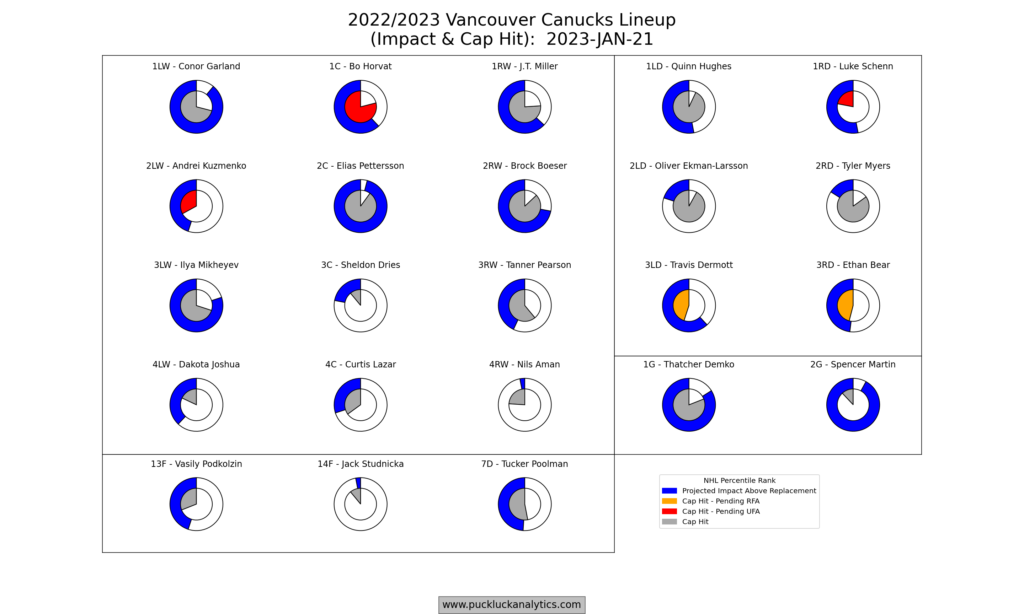
The plot above gives us a look a the Canucks current NHL roster, with an eye on both projected impact, cap hit, and expiring contracts.
Key Players
First, we’ll focus on the impact projections to identify which players can be labeled as Key Players in our teambuilding model. Up front, the obvious choice is Elias Pettersson who profiles as one of the highest impact centers in the NHL. He’s just coming into his prime at 24 years old and it’s reasonable to think that he’ll be highly effective well into his 30’s. He’s also having a strong season despite the Canucks struggles at a team level this season and we see his projected impact trending upward.
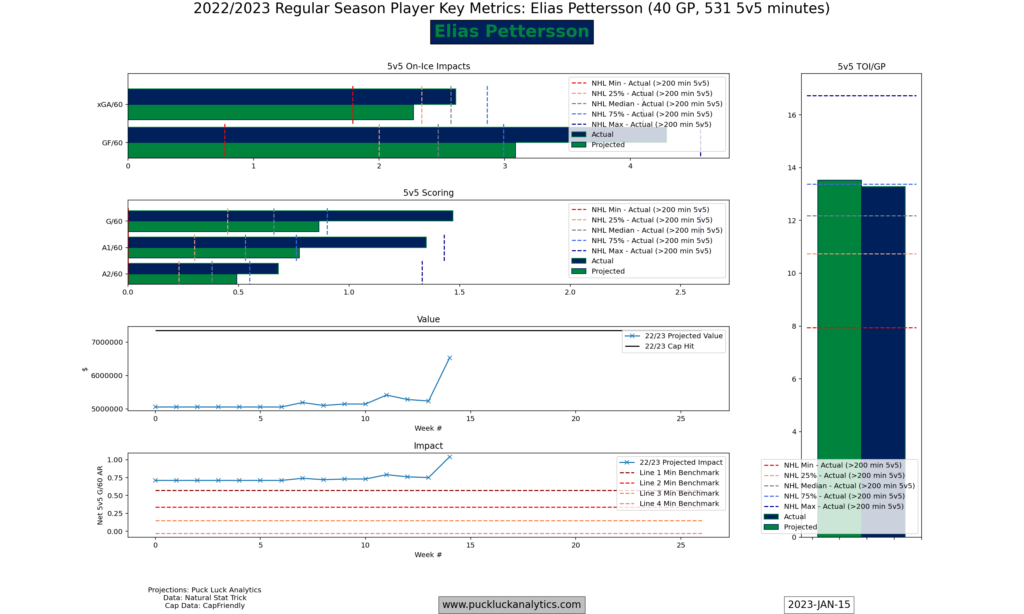
Aside from Petterson, the Canucks don’t have any players of sufficiently high impact that we want to include them as Key Players. Quinn Hughes is probably the next closest but, at age 23, he’s not far from his prime. Expecting him to be a dominant 1D through his prime and highly impactful for at least another five years beyond that looks like a stretch.
Contention Core
The Canucks roster consists primarily of players between age 25 and 30. Following our Roster Regeneration approach, that means we should have a current core capable of contending for a Stanley Cup. Clearly, the Canucks haven’t performed anywhere near that level this season so what do we have?
In the forward ranks, we have 3 skaters that look like they could be part of a top 6 on a contending team. Brock Boeser (25), Conor Garland(26), and Ilya Mikheyev (28) all profile as capable top 6 wingers. Alongside Pettersson, that leaves us with only 4 of the top 6 forwards we’re looking for to contend. What about Bo Horvat and J.T Miller? Both have projected impacts right at the 2nd line benchmark, making them borderline top 6 forwards. If we want to contend, we need to be better than average not just scraping by.
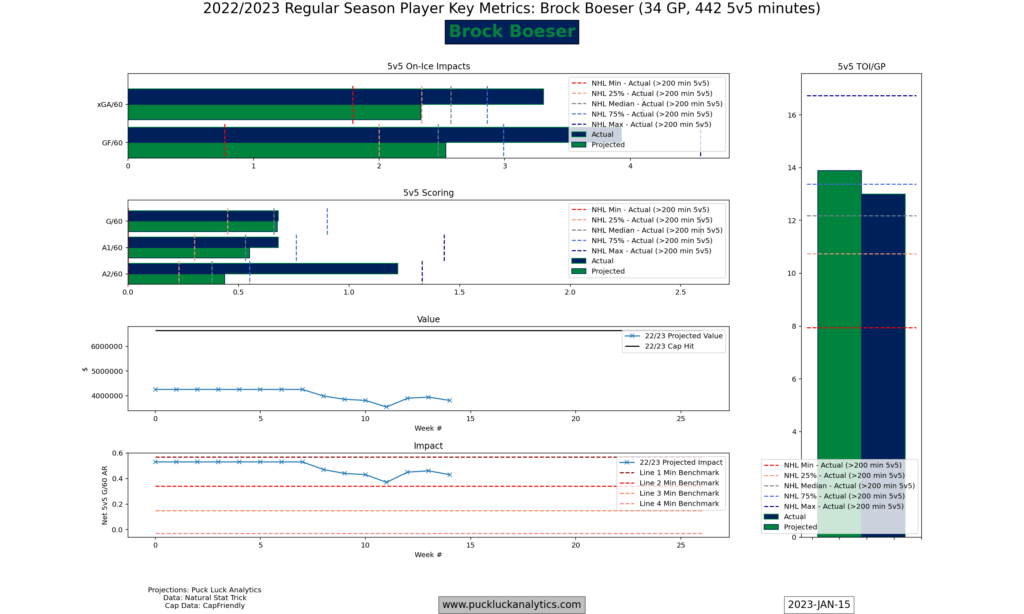
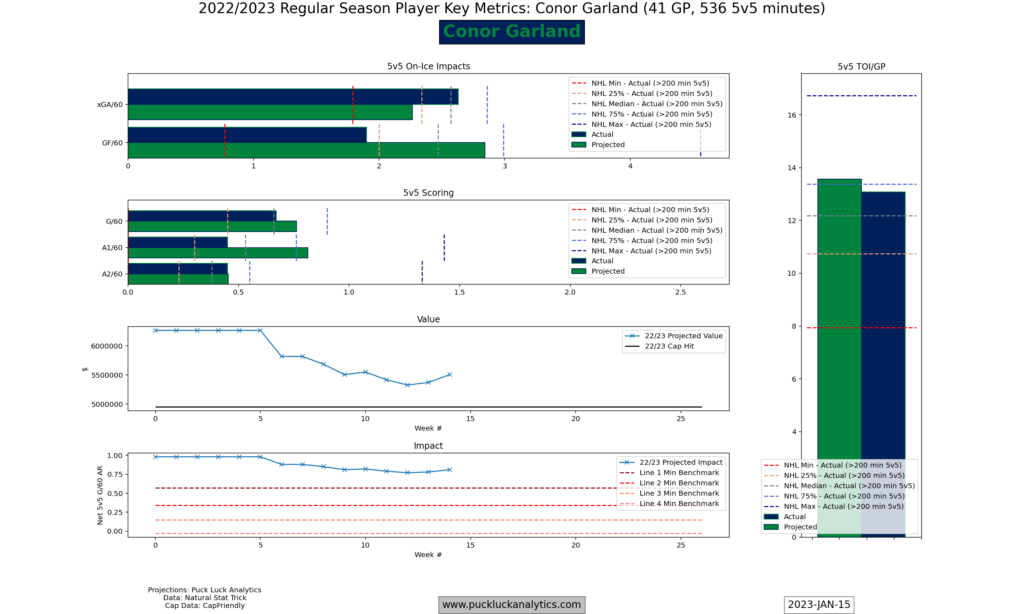
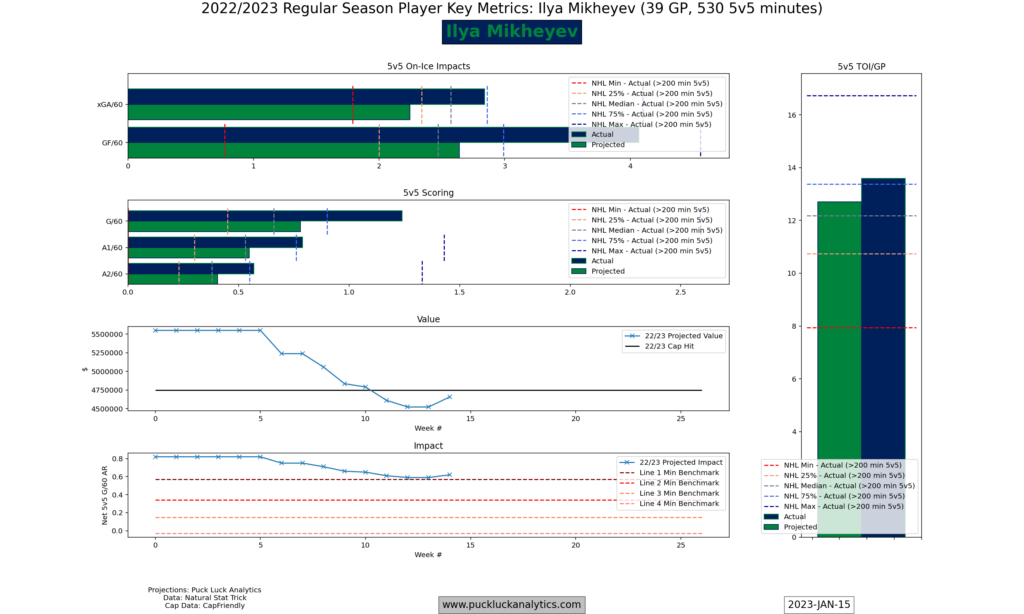
On the blueline, we have bigger issues. We don’t have a single defensemen with a projected impact of a top pair defenseman, so we’re missing two core defensemen right off the bat. There are a few options for a 3D, including Quinn Hughes (23), Travis Dermott (26), Luke Schenn (33), and Ethan Bear (25) although none profile as a dominant 3D at the moment.
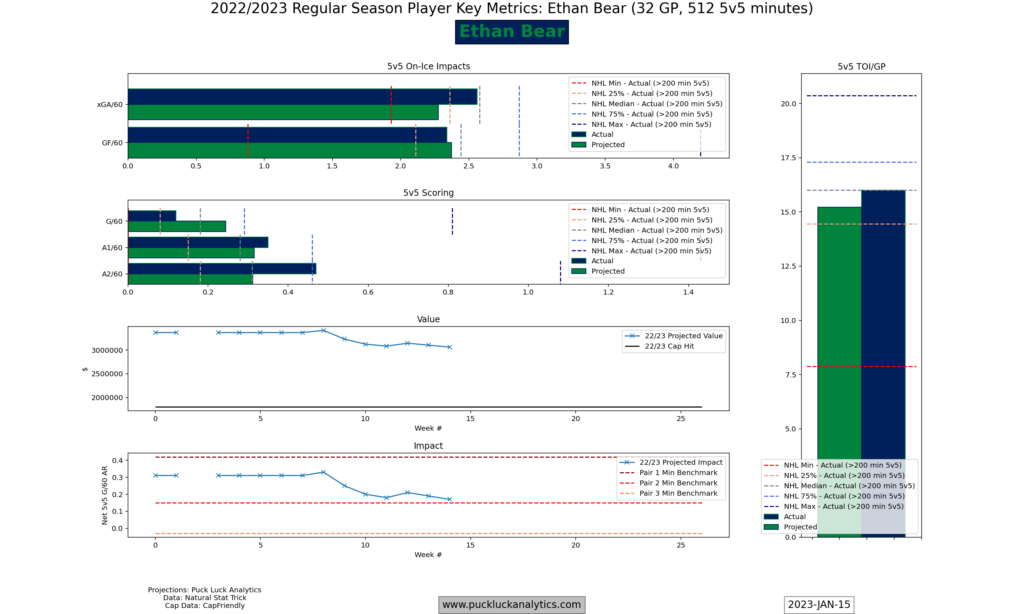
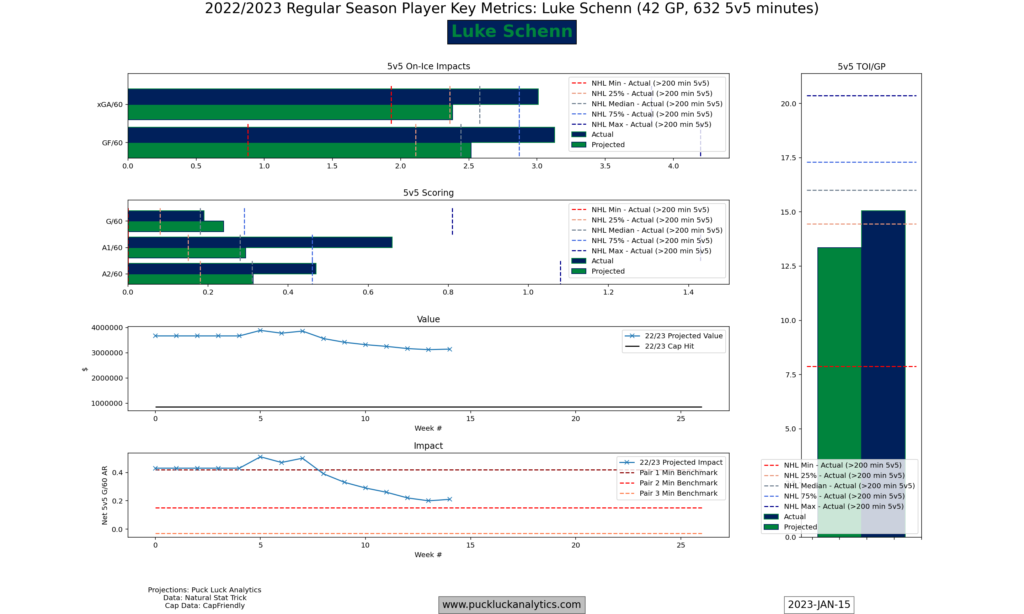
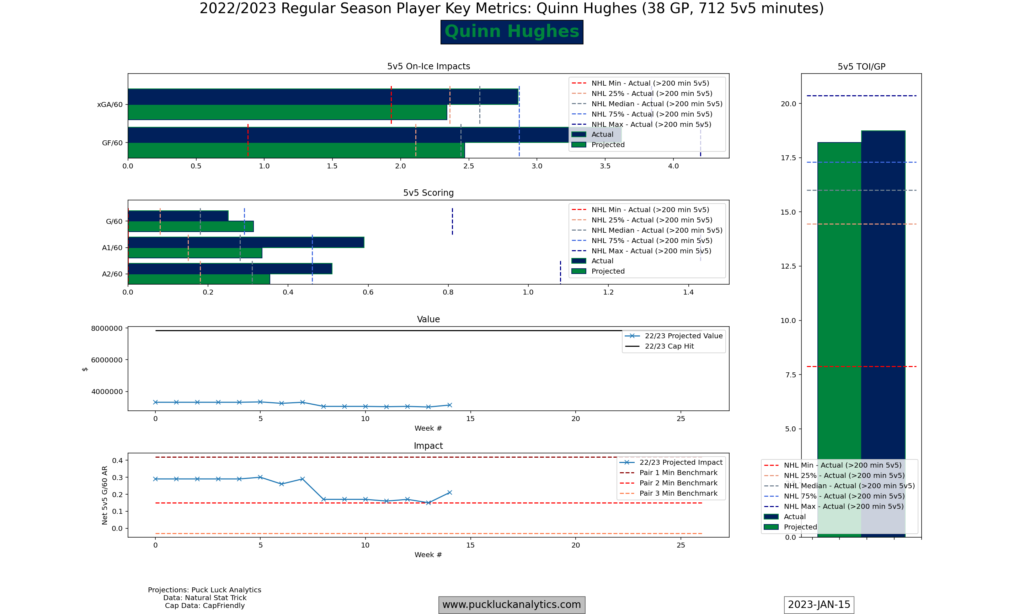
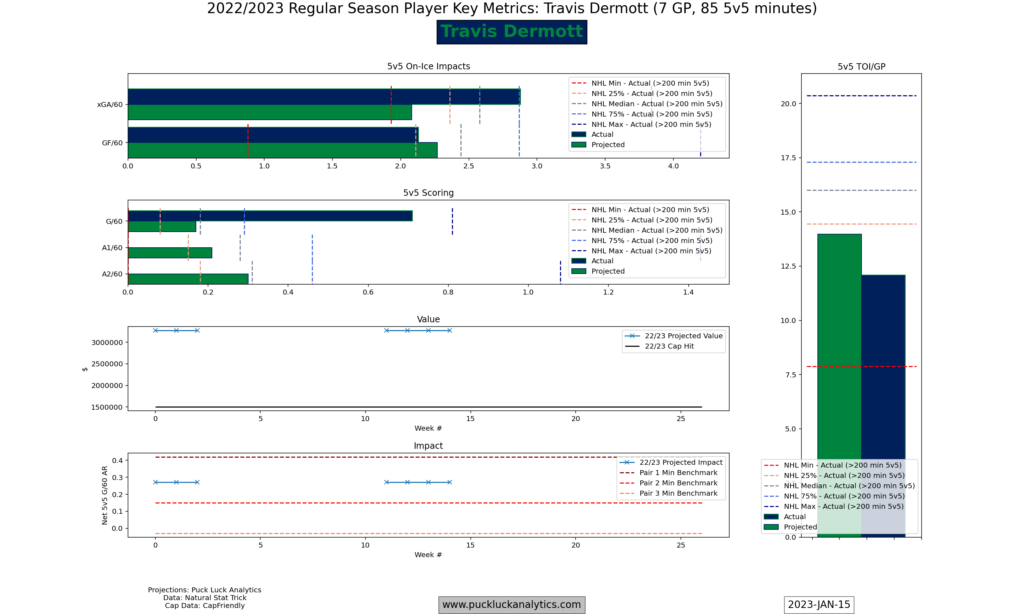
Goaltending is the only area where we appear to be set with a solid tandem for our current core. Thatcher Demko (27) and Spencer Martin (27) both profile as starting goaltenders currently.
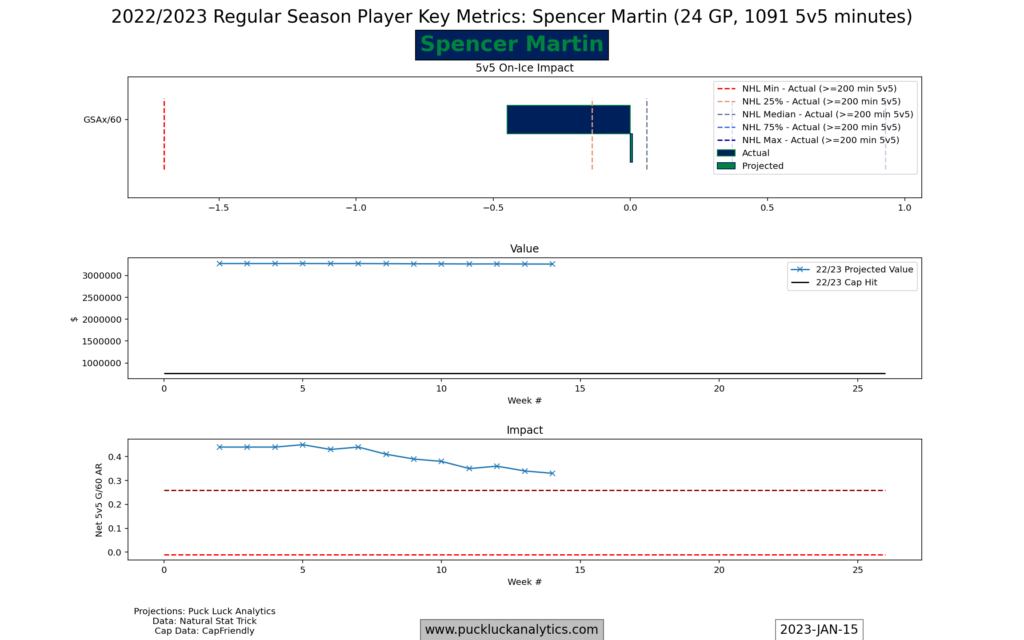
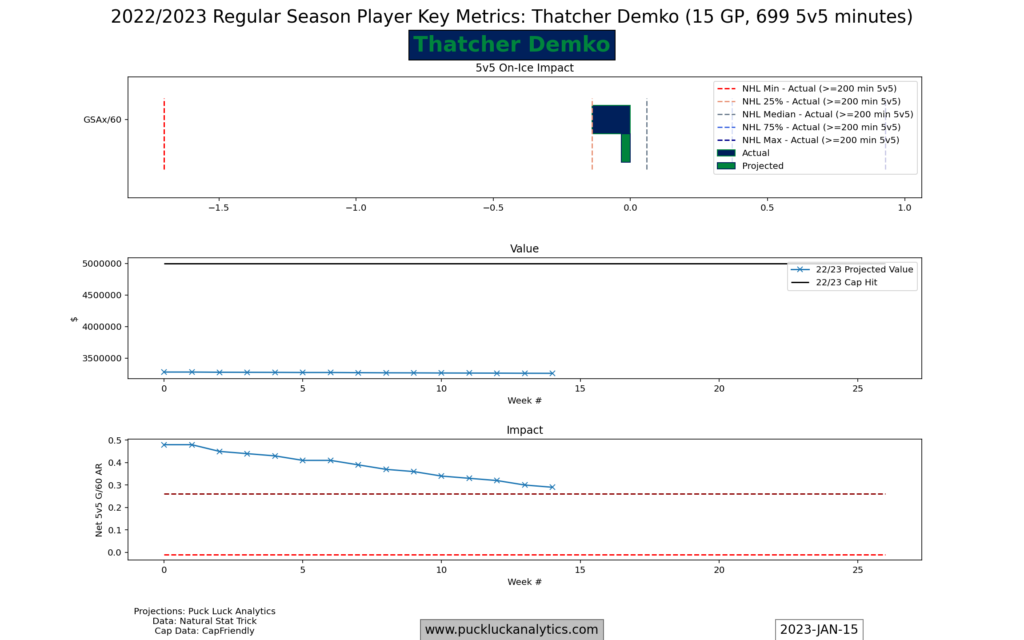
Future Core
With the current NHL roster in it’s prime, we’d like to have a future core in place that can fill some depth roles for the current squad and be ready to take over as the primary drivers of the team once the current core ages out of their prime years.
The future core should be 5-7 years behind the current core, so we’re looking for a group of players around the ages of 18-20. That doesn’t mean that players age 21-24 are of no use to us, but we should consider very carefully how they fit into our plans. We may be best off to move those players simply to maximize the potential of our core groups.
Nils Hoglander (22) and Vasily Podkolzin (21) are the only players with significant NHL experience that fall near our target age range for the future core. Both profile as bottom six forwards currently, but they have time to develop. Neither look likely to become Key Players but both could be capable top six forwards in their prime based on their current trajectories.
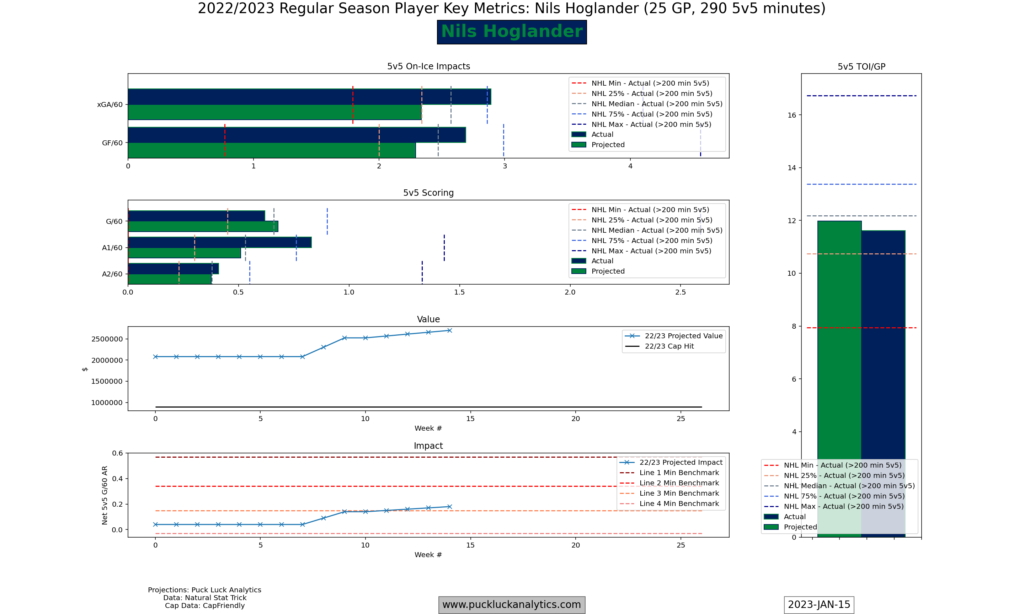
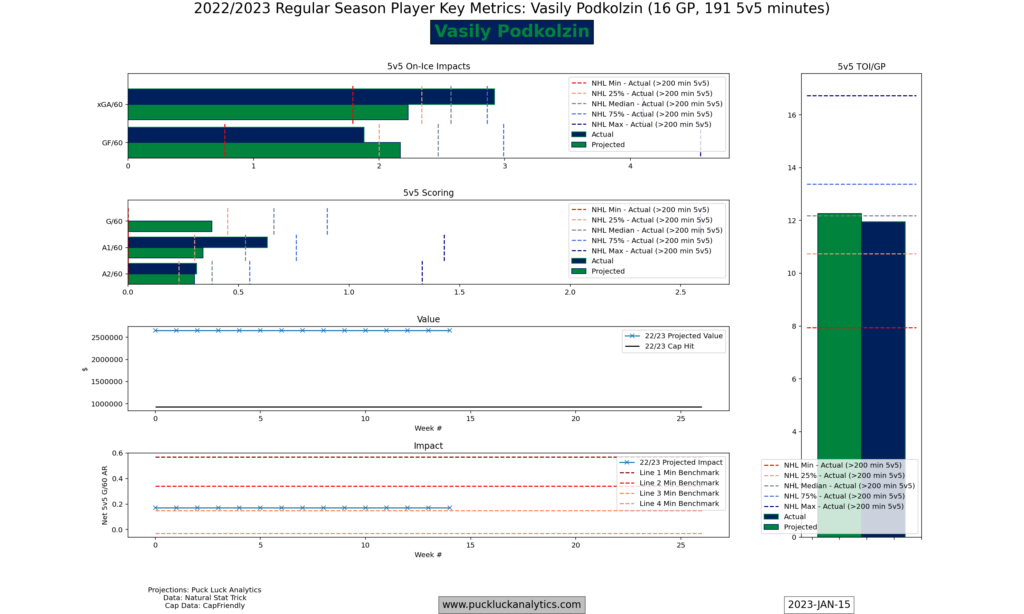
If both Hoglander and Podkolzin both pan out as top six forwards, we still need another 2-3 forwards for our future core. We also need 2-3 defensemen and a goaltender. Let’s take a look at the prospect pool with the help of Hockey Prospecting.
Based on Hockey Prospecting’s projections, the Canucks have 3 forwards with >50% chance of becoming regular NHL players (excluding Podkolzin, who we’ve already discussed). Similarly, there are 4 defensemen in the system that have >50% probability of becoming regular NHLers. Overall, the Hockey Prospecting model predicts 6.6 expected NHLers and 0.8 expected stars out of the current pool, ranking it 27th in the NHL.
The current state of the prospect pool is another big concern for us. The future core is going to be missing some pieces unless we get some miraculous prospect development on a large scale. The utter lack of star potential is the biggest concern and it’s an area we’ll want to address.
Current Roster Regeneration Status
Let’s sum up where we’re at relative to the Roster Regeneration framework and what we need to set the Canucks up for long term success.
| Category | Have | Need |
| Key Players | C – Elias Petterson | 1 Elite Forward 1 Elite Defenseman |
| Contention Core | RW – Brock Boeser RW/LW – Conor Garland LW/RW – Ilya Mikheyev | 1-2 Centers 1 Wingers 2 Defensemen |
| Future Core | LW/RW – Nils Hoglander LW/RW – Vasily Podkolzin | F, D Prospects with star potential F, D, G Prospects with NHLer potential |
In a nutshell, we’re not were we want to be on any front. The Canucks current roster is missing Key and Core players needed to contend. The prospect system is one of the worst in the NHL and doesn’t have the future assets needed to build the next core.
There’s a lot of heavy lifting required to bring the Canucks roster inline with the Roster Regeneration framework. We’ll tackle that next time.
Interested in digging deeper into the Canucks’ roster or investigating your favorite team? Sign up for an annual membership to get access to all 22/23 team and player projection plots. Plots are updated to track progress through the season so you can follow along with the changing landscape.
Historical player data from Natural Stat Trick. Contract data from CapFriendly.
